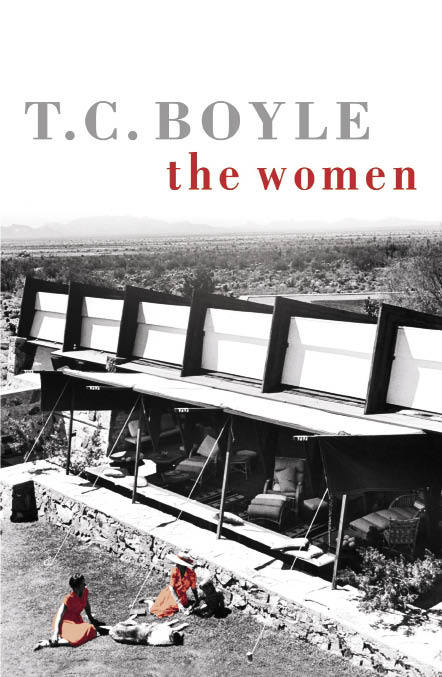Tom Coraghessan Boyle, in some 20 books, has energetically demon- strated his enthusiasm for turning the bio- graphies of figures from early 20th-century American life into quasi-historical fiction. After writing the story of the sex-obsessed researcher Dr Alfred Kinsey and the rare tale of the inventor of the cornflake, Will Keith Kellogg and his health farm, perhaps it was inevitable that the roaring private life of the architect Frank Lloyd Wright would be a natural sequel.
The Women is certainly not a novel about architecture, although the narrator of the story, Tadashi Sato, is a young Japanese architectural student who is drawn to the studio/commune run by Wright at Taliesin in Wisconsin. This is a skilful device, his name means ‘correct’ in Japanese, and he acts as a kind of moral compass to the activities of the wayward architect. He admires Wright as a creative genius and bows low in his presence, while coolly observing his arrogance and cruelty. He is helped in the telling of this complex tale by his invention of an Irish American co-author / translator — one Seamus O’Flaherty whose sharp footnotes are of course the clear voice of Mr T. C. Boyle nudging the reader to see things his way.
There were four key women in Frank Lloyd Wright’s life. His first wife Kitty Tobin, whom he married in 1889, gave him six children, but she only comes to life as Wright leaves her for the wife of one of his clients, a neighbour in Chicago’s Oak Park, Martha ‘Mamah’ Borthwick Cheney. Mamah translated Swedish feminist literature and believed in a life of physical passion, happily dumping her children to escape with Wright to Germany while they waited for their divorces. They returned in an atmosphere of scandal to Wisconsin where, undaunted, Wright built a home and studio called Taliesin (Welsh for shining brow) but soon christened by the press ‘Wright’s Love Bungalow’. When a disgruntled servant killed Mamah, two children and four employees and then burnt the place down, the ‘hyenas’, as Wright called the press, revelled in the intensity of the drama.
The true story is almost too much for Boyle, who has really to exert his impressively energetic writing style to continue to grip the reader in the second half of his novel when the other two women are brought on stage. Madame Maude Miriam Noel, who sends Wright consoling letters after the fire and murders at Taliesin, soon moves in to dominate the novel and the architect. She is a nightmare, a morphine addict and home-breaker who is to haunt and exhaust Wright with her unfathomable desires. She is luridly fascinating and was constantly trailed by the yellow press. Wright’s ambivalence about publicity prevails throughout the novel — and Miriam ensured that the fact and fiction of his life became utterly confused.
Woman number four was the colourful but quaint dancer from Montenegro, Olgivanna Lazovich Milanoff, whom Wright would marry in 1928 and enjoy some calm with after the rages and emotional fury of life with Miriam. But Miriam doesn’t leave the novel. She is the frightening heart of it. She was to haunt Wright and Olgivanna until the end.
How Wright managed to maintain the quality, quantity and inventiveness of his architectural practice throughout the maelstrom of his home life remains a mystery. Sadly his character doesn’t develop in the novel — for that you have to look at his buildings, and it is interesting that Boyle lives in the only Prairie-style house that Wright built in California. It was designed in 1910 for a Scottish accountant and is remarkably gloomy. Perhaps under those darkening eaves it is still haunted by the misery of Wright’s relationships and writing this book is Boyle’s way of exorcising the ghosts of four ultimately tragic women. It is a gripping story.






Comments